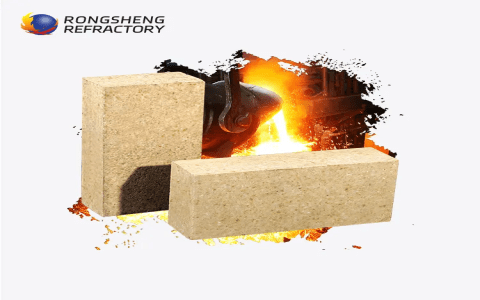Alright, let’s talk about this here “refractory materials meaning” thing. Now, I ain’t no fancy scientist or nothin’, but I can tell ya what I know.
It’s like this, see? These “refractory materials,” they’re tough stuff. Real tough. They gotta be, ’cause they’re used where it’s hotter than a summer kitchen on canning day. We’re talkin’ real, real hot, like in them big furnaces they use at the steel mill. You know, where they melt down all that metal. These materials, they don’t melt down like butter in a hot pan. They hold their shape, they stay strong.


So, what exactly are they made of? Well, it ain’t like your everyday dirt or rocks. They’re special kinds of stuff, mostly not metal. Think of it like fancy clay, but way, way stronger. Some of it’s porous, like a sponge, and some of it’s solid as a rock. It all depends on what they need it for.
- Heat Resistant: They gotta stand up to the heat, that’s the main thing. Like I said, furnaces and such. They don’t melt or fall apart when things get cookin’.
- Chemical Resistant: And it ain’t just heat neither. Sometimes there’s nasty chemicals around, and these materials gotta be able to handle that too. They can’t just break down or dissolve when somethin’ spills on ‘em.
- Strong: They gotta be strong, you know? Can’t be crumbly or weak. They gotta hold up whatever they’re supposed to be holdin’ up, even when it’s hotter than heck.
Now, there’s different kinds of these materials, just like there’s different kinds of folks. Some are better at this, some are better at that. It all depends on what you need ’em for. It has different shapes and sizes and stuff too. And it’s all made in different ways.
Think of it like this: you wouldn’t use a flimsy tea towel to pull a hot pan out of the oven, would ya? Nah, you’d use a good, thick oven mitt. Well, it’s the same kinda idea with these refractory materials. You gotta use the right stuff for the right job.
What do they use ’em for? Well, like I said, furnaces. Lots and lots of furnaces. Steel mills, glass factories, power plants, even those fancy pizza ovens some folks have in their backyards. Anywhere you got really high temperatures, you’re gonna need refractory materials.
They’re also used to make things like fire bricks. You know, the kind they use in fireplaces and chimneys? Those bricks gotta stand up to some serious heat, and that’s where refractory materials come in. They keep the heat where it’s supposed to be and prevent things from catchin’ fire.
So, basically, if somethin’ needs to withstand high temperatures without fallin’ apart, it’s probably made with or surrounded by refractory materials. It’s that simple. They’re the unsung heroes of the high-heat world, you know? They don’t get much attention, but they’re doin’ the important work of keepin’ things from meltin’ down or blowin’ up. Just strong stuff that keeps everything working right. It’s gotta be at least 1580 degrees Celsius hot before they even start to think about givin’ up. That’s hotter than anythin’ I’ve ever seen, that’s for sure.
In short, “refractory materials” are just materials that can take the heat, plain and simple. They don’t break down, they don’t melt, they just stay strong and do their job, no matter how hot it gets.
And that’s about all I got to say about that. It ain’t rocket science, but it’s important stuff. Keeps things runnin’ smooth, you know? Just like a good cup of coffee in the mornin’.


Tags: [Refractory Materials, Heat Resistance, High Temperature Materials, Industrial Materials, Material Science]



